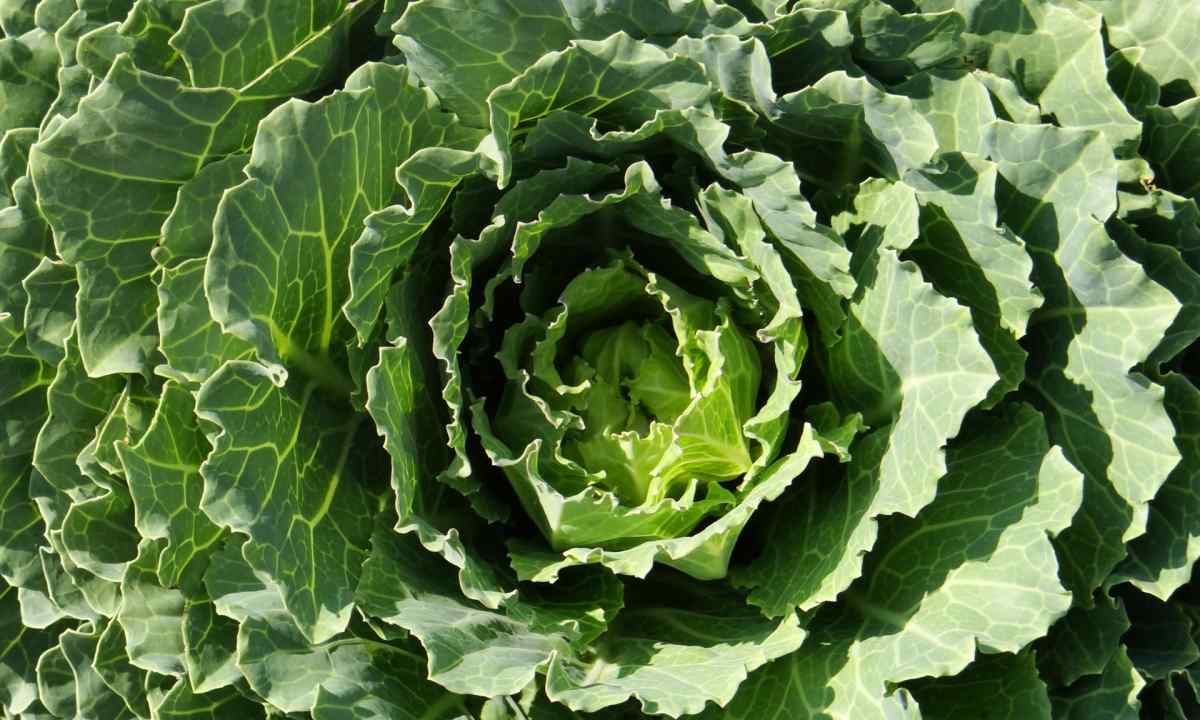Cabbage of Calais belongs to family of the Cruciferae family and in the people is known as curly cabbage. This culture does not form head of cabbage, and gives harvest in the form of beautiful curly leaves. Therefore it is often used as ornamental plant in garden. However this vegetable is very useful and at consumption saturates organism with various vitamins, minerals and biologically active agents.
Useful properties of cabbage of Calais
Curly cabbage — sheet vegetable culture, is high on the list among vegetable products by amount of proteins. Besides, Calais contains 25 amino acids, important for organism, and the amount of Omega-3 fatty acid in its leaves corresponds to amount of this substance in fish.
Only one portion of salad from leaves of curly cabbage is enough to provide the daily need of organism for valuable vitamin A. There are in considerable quantity vitamins of group B, PP, C, K, magnesium, phosphorus, potassium, zinc and selenium and also such useful elements as lutein and zeaxanthin.
Such valuable element as calcium, in leaves of cabbage of Calais contains approximately in the same volume, as in dairy products. And at all this the caloric content of culture is extremely low, only 50 kcal on 100 grams of cabbage. Therefore this vegetable is considered irreplaceable in dietary power supply.
However it is important to notice that all these useful substances are available only in fresh leaves of cabbage of Calais. Heat treatment significantly reduces usefulness of culture therefore it is recommended to eat salads and freshly squeezed smoothie from leaves of Calais.
Cultivation of curly cabbage
Cultivation of grade of Calais is similar to cultivation of normal white cabbage. However it should be taken into account that curly cabbage does not love change therefore it is desirable to sow its seeds on bed under the film shelter at once.
On terms the landing is carried out in the middle or the end of April, after emergence of sprouts it is better to thin out shoots. If there is no possibility of crops in these terms, then cabbage of Calais is sowed on seedling at the end of March or the first decade of April.
For this purpose the gardeners usually use seedling cartridges. Each cell is filled with light fertile substrate. Then it needs to be watered with warm water and, having made lunochka in 1 cm, in everyone to lay out 2-3 sunflower seeds. Sunflower seeds of Calais should be wetted previously. After shoots in each cell leave the strongest sprout.
Look after seedling as usual, carrying out regular watering and dosvechivaniye of shoots by daylight lamps. Also neobzkhodisa of fertilizing and temperature maintenance indoors with seedling are not higher +18os. Shoots of curly cabbage should be watered moderately, without allowing soil overwetting, otherwise there is probability of defeat of seedlings disease of black leg.
As fertilizing it is possible to use any complex organomineral fertilizers which should be brought strictly according to the instruction. That saplings well developed, it is necessary to fertilize them twice – in 12-14 days after shoots and in few weeks.
The tempered seedling of cabbage of Calais is planted to the open ground as soon as there come weather patterns favorable for this purpose. The bed is placed on the solar place, before crops the earth fertilize humus and mineral fertilizers, on each sq.m nuzhgo 2/3 buckets of humus and 1 tablespoon of azophoska. If on the site the sour soil, under redigging bring in addition wood ashes (to 0.5 kg on sq.m). Heavy clay soils, in addition, should be fertilized on half-buckets of the rerotting sawdust on each sq.m of bed.
Seedling of curly cabbage is planted on open bed in the middle or the end of May. For this purpose the earth lump of each sapling is accurately taken out from cells and placed in holes. Holes it is necessary to have on bed with interval in 30-40 cm. Seedling is buried to the earth to the lower leaflets, condense the soil around stalks and it is abundant water with otstoyanny water.

